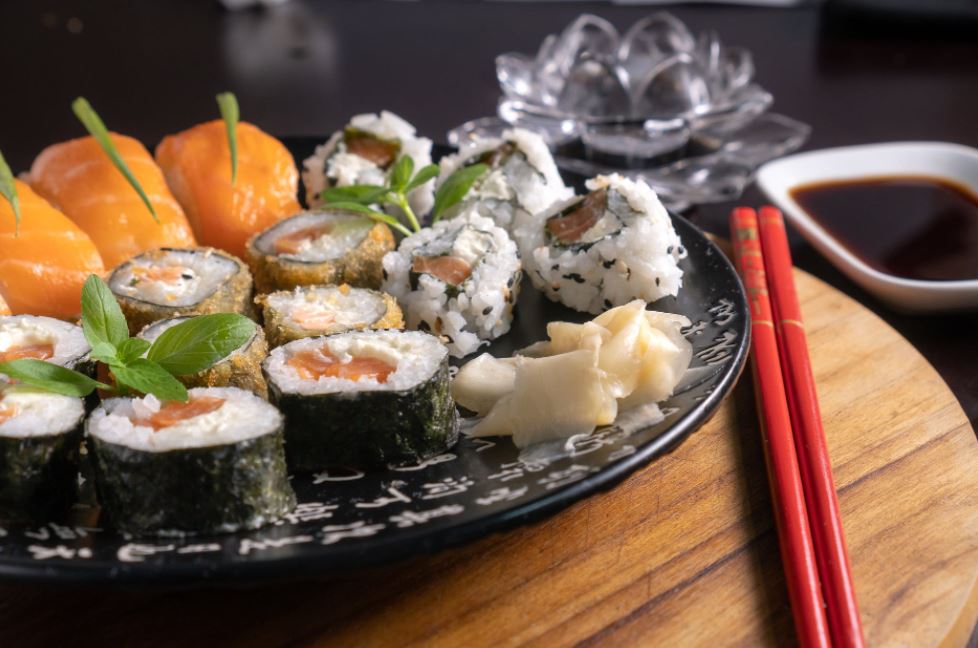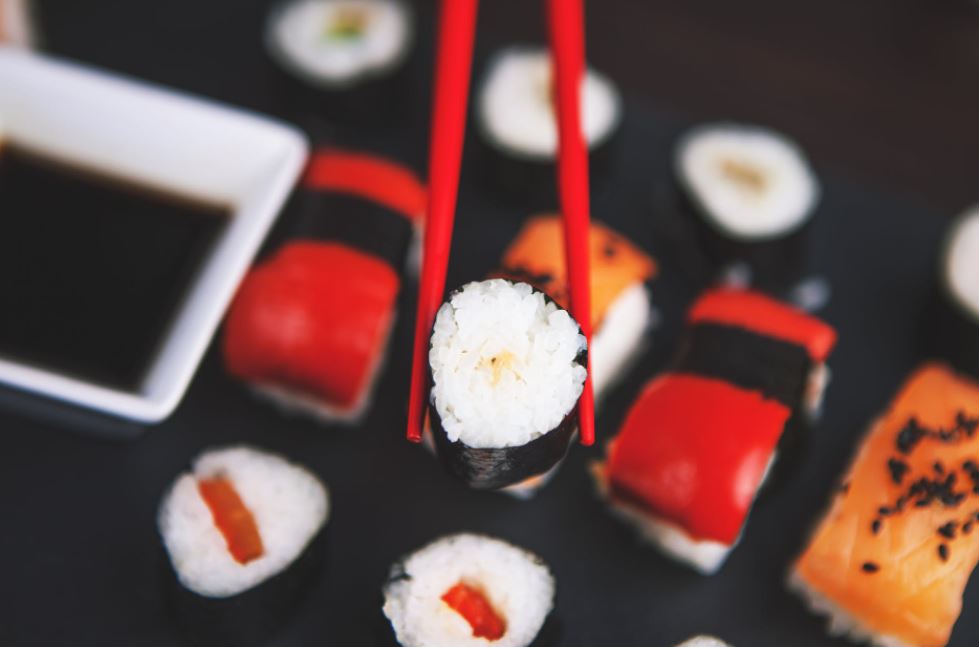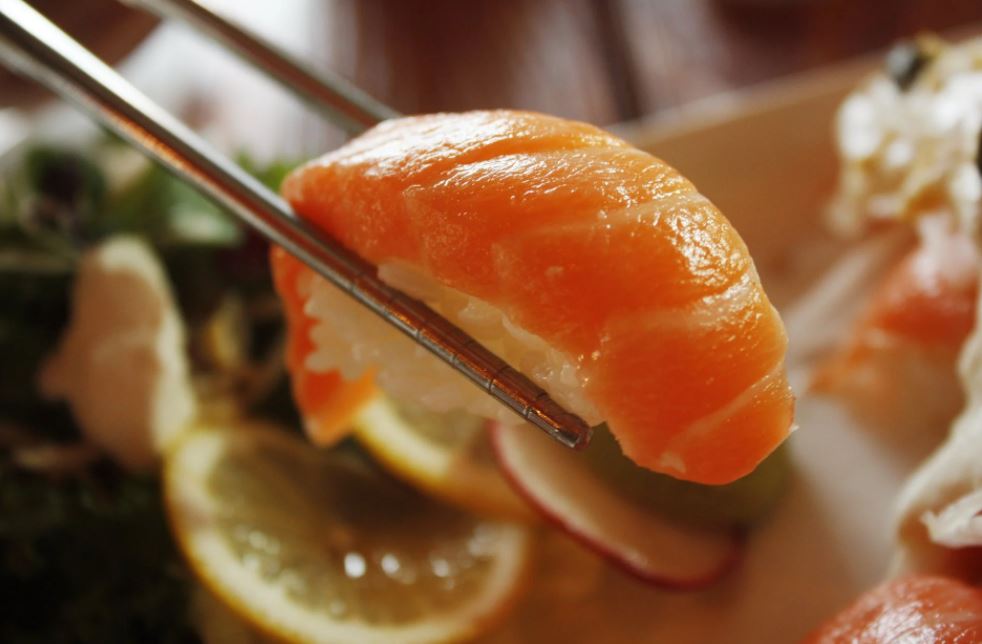Sushi is among the most mind-boggling yet delectable types of food globally, one of Japan’s notable symbols and almost equated with Japanese cuisine. Eating raw fish might make you uncomfortable at first, but there’s a reason why it’s been a favorite food of the Japanese for centuries and has recently taken the world by storm.
While Westernized versions of sushi (like the California roll) have gained popularity, just one bite of Japanese sushi can be a life-changing experience. Sushi, which is low in fat but high in protein, vitamins, carbohydrates, and omega acids, is not only one of the healthiest dishes in the world, but it also has a delicate taste that few, if any, other cuisines can match.
However, eating sushi can be quite perplexing. You have questions, and we have answers.
So, keep reading if you’re ready to get hung up on sushi and aren’t sure where to begin. In this sushi guide, we’ll tell you all you need to know and provide some helpful hints to see you through your sushi experience.
Types of Sushi
Sushi comes in various forms and variations, with every region specializing in various fish and cooking styles. The following are the most common sushi types:
- Nigiri-zushi – The most common sushi type, consisting of a slice of raw fish or another topping atop an oblong rice mound; also referred to as Edo-mae sushi.
- Makizushi – A sushi roll, which consists of raw fish and some other ingredients wrapped in seaweed and rice and eaten by hand. They are available in various sizes, including hosomaki (thin roll) and futomaki (large roll) (thick roll)
- Inari-zushi – Vinegared rice wrapped in a pocket of flavored fried tofu
- Gunkan-maki – Similar to nigirizushi, but with seaweed wrapped around it. Salmon roe and sea urchin are frequently found in the gunkan-maki form.
- Temaki-zushi – Similar to makizushi, but eaten by hand and in a conical shape.
- Nare-zushi – A type of fermented sushi that has been around for a long time.
- Chirashizushi – Raw fish pieces placed atop a bowl of rice; highly suggested for those who want to try a variety of fish or a lot of one type at a low cost. Literally, “scattered sushi.”
- Sashimi – Raw fish slices (no rice)
- Oshizushi – Rice and cured fish formed into a box or other mold; famous in Kansai and Osaka. Literally, “pressed sushi.”
Common Fish in Sushi
You can make sushi with almost any type of fish. Tuna and salmon are popular choices, as are an octopus, crab, and shrimp. However, more exotic ingredients, such as eel (a traditional Japanese favorite), swordfish, and sweetfish, may be available. These are the most common fish types used in modern sushi rolls:
- Tuna
- Salmon
- Shrimp
- Crab
- Octopus
- Yellowtail
- Seabass
- Blue marlin
- Mackerel
- Trout
- Swordfish
- Abalone
- Squid
- Scallop
- Eel
- Flatfish
- Sweetfish
- Ark shell
- Halfbeak
- Clams
- Cockle
- Sea bream
If you don’t recognize a particular type of fish or ingredient in a roll, ask your server! Some may go by different names or have Japanese names.
You can be safe and order a roll that includes a fish you recognize and like, such as tuna, salmon, or trout. Or, for something more daring, try a fish you’ve never tried before, such as the Isaki; Isaki sushi is arguably the best way to try this type of fish because the true raw flavor of the fish shines through.
How to Eat Sushi
Sushi is typically served with three types of condiments:
- Wasabi – Most nigiri sushi comes with wasabi, also known as “Japanese horseradish.” This pungent green paste adds a little kick to sushi and reduces the risk of food poisoning, but it often polarizes foreigners and Japanese people alike because of its strong taste.
- Soy sauce – Except for anago, almost all sushi types are eaten with soy sauce. Rather than pouring it directly onto the sushi, pour some soy sauce into a small round dish and dip it there before eating.
- Shoga (gari), or pickled ginger, is another “disputed” condiment essential to sushi. Again, its spiciness turns off many people, but it, like wasabi, has antibacterial attributes and is eaten to cleanse the palate. An added benefit: if you didn’t realize you put too much wasabi on the sushi until too late, this orange-pink condiment cancels out its tingling spiciness.
Sushi Eating Tips
Here are some pointers and etiquette for eating sushi (which are usually followed when dining at a good sushi restaurant):
- Despite popular belief, you can eat sushi with either hands or chopsticks – both are acceptable – except sashimi, which requires only chopsticks.
- Soaking the rice in soy sauce destroys the flavor of the sushi. To avoid this, for nigiri-zushi, pick the sushi, flip it over, and dip roughly half or one-third of the fish in the soy sauce.
- Soy sauce on the rice is unavoidable for makizushi and gunkan-maki; make sure not to use too much; a tiny dab should suffice.
- One foolproof and fancy way to apply soy sauce to gunkan-maki is to soak the pickled ginger into soy sauce and then use it as a “brush.” If the gunkan-maki arrives with sliced cucumber, dip those (rather than the entire thing) in the soy sauce before eating.
- Even though there’s no wrong or right way to eat sushi, it is generally recommended to begin with mildly flavored fish (typically white-fleshed, like snapper or flounder) before progressing to stronger-flavored fish, such as sea urchin and tuna. You should enjoy sushi in your unique way!
- Drink some tea or shoga in between sushi slices to refresh your mouth and cleanse your palate; tea, like shoga, is antibacterial. This practice antedates to the introduction of nigiri-zushi; wasabi, shoga, and tea were essential when raw fish preservation methods were not as developed.
- To enjoy the balanced taste of the rice and the ingredient, eat the sushi in one bite. If you cannot do so, request less rice from the master. Except for chirashizushi, do not eat rice and fish separately!
- If you don’t like wasabi, let the chef know ahead of time – almost all sushi pieces come with it by default. If you like wasabi, however, you can always request for more (same with shoga).
When you first try sushi, you’re probably excited but overwhelmed by the variety. Fortunately, eating sushi is simple, particularly if you follow these guidelines and get beginner-friendly rolls.
Even if you don’t reckon you’ll enjoy raw fish, we recommend giving it a shot. The fish used in sushi is superior to what you’ll find in most restaurants, with a pleasant taste and a firm texture – and you might be surprised to discover that you enjoy the complex, unique, and addictive flavors of sushi.




